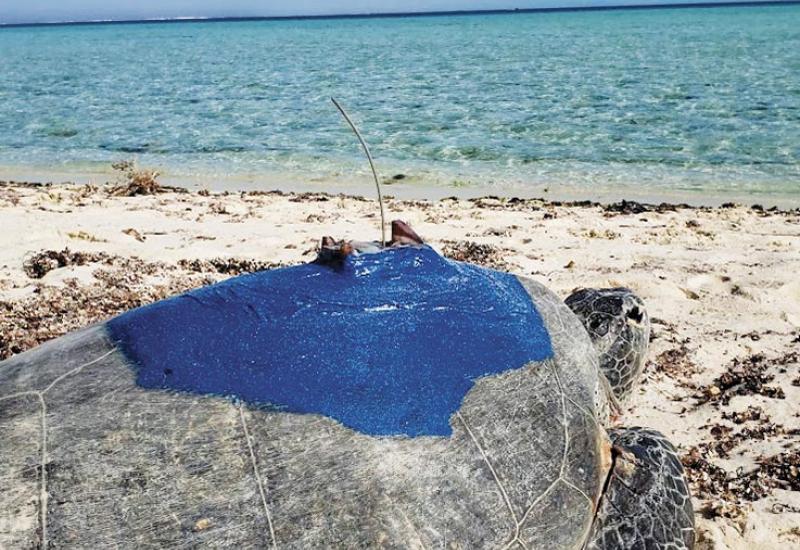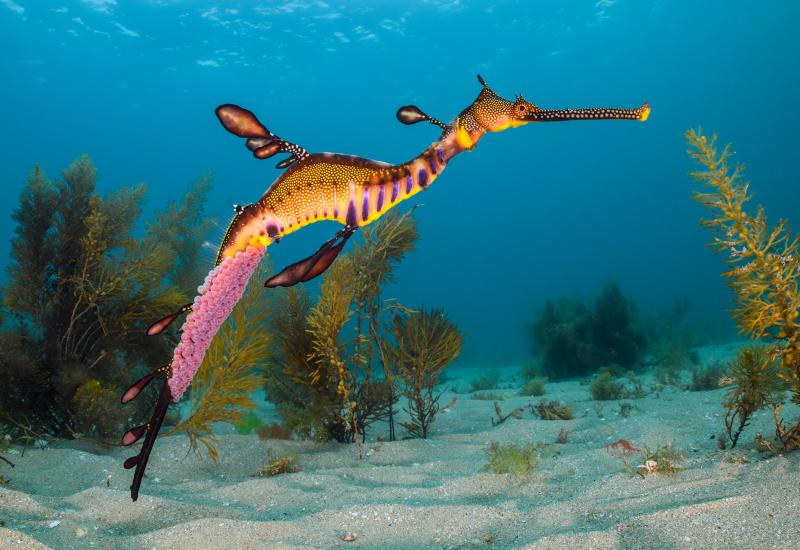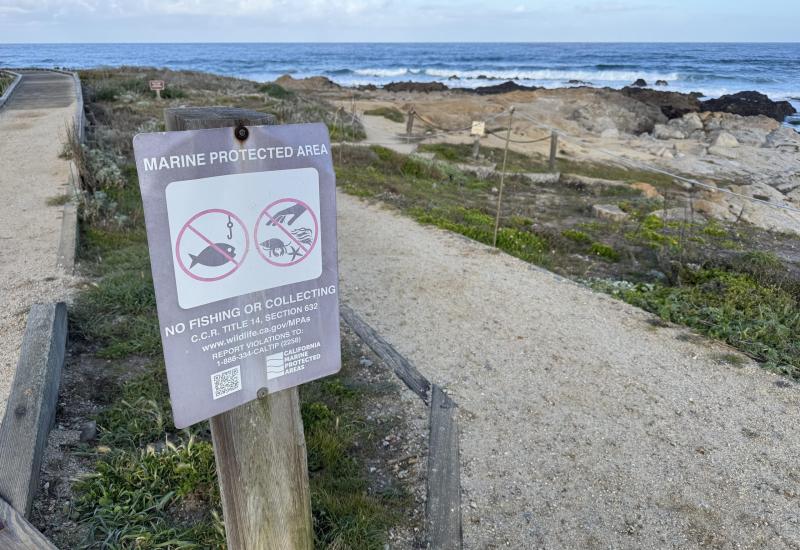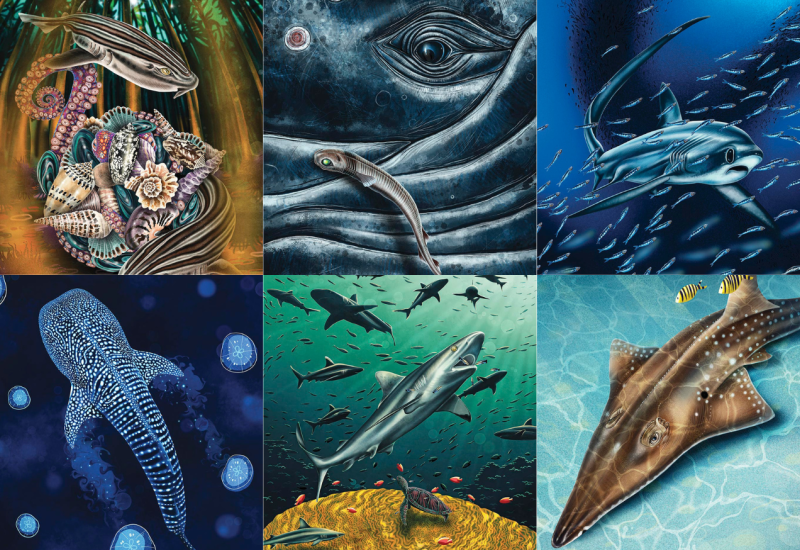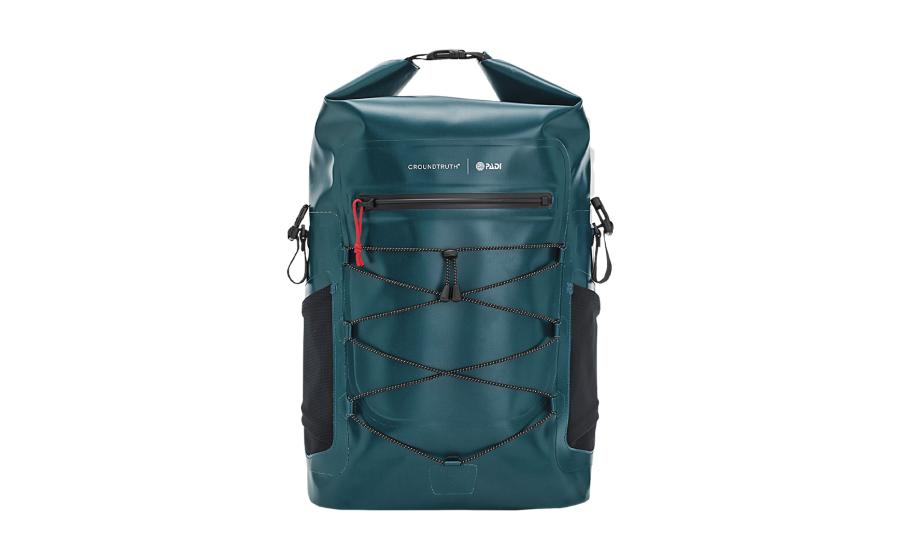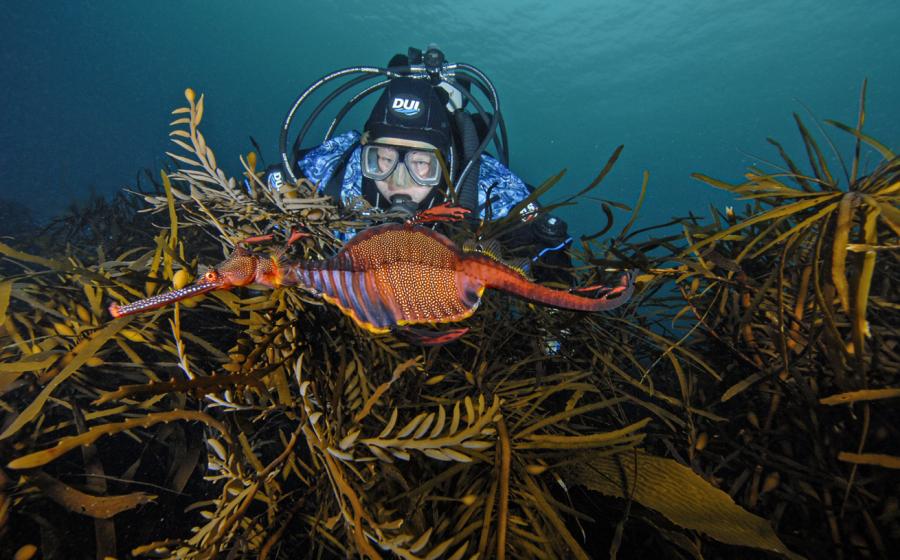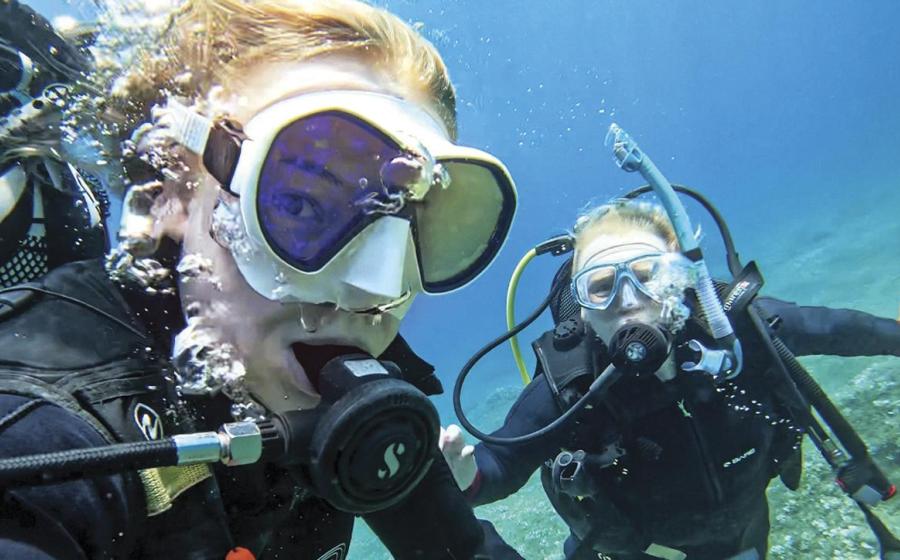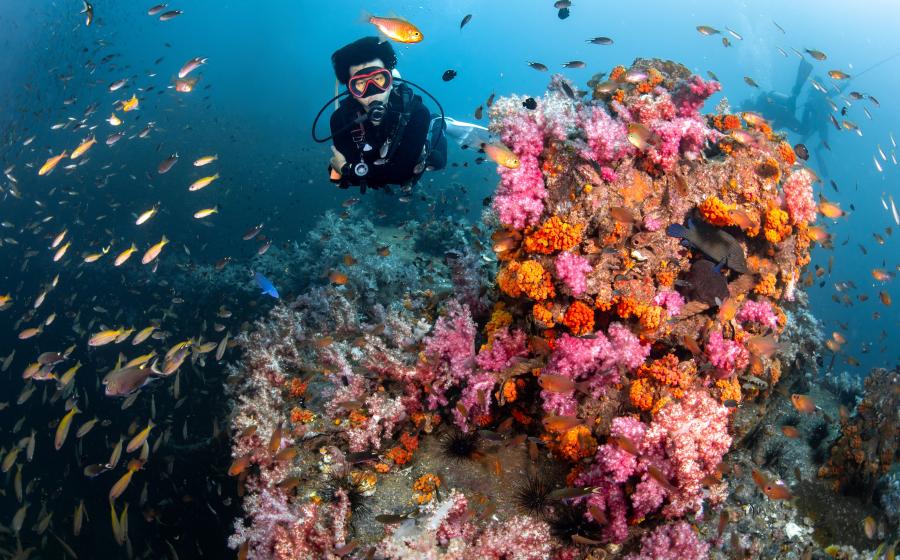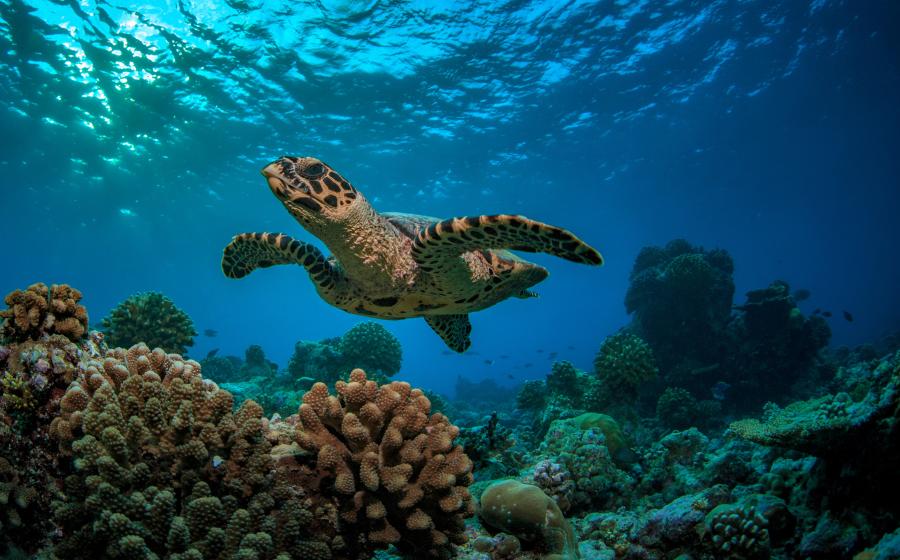Scavengers of the Sea
Creature Feature
Forget the thrill of the hunt — these creatures have adapted to get their meals in fascinating ways.

iStockSpider crab
These deep dwellers have adapted to a nomadic lifestyle. Spider crabs can survive long periods without eating while waiting for the next food fall — a dead animal that descends from the surface. These crabs have poor eyesight, but scientists believe that bacteria collecting at food falls give off light that is detectable by the crabs. And when they’re walking along the barren ocean floor, they use sensitive organs at the end of their legs to locate food in the mud.
Related Reading: Mad for Madeira, Portugal
Great White Sharks

iStockGreat white shark.
It may surprise some to learn that these predators also enjoy easy targets. Researchers found great whites off the coast of South Africa calmly feeding on the same whale carcass, a departure from the frenzied hunting we typically see when they attack living prey. Researchers stated in a 2013 report that the sharks assess the value of their bites, as they would sometimes regurgitate “one bite to make room for a second, more calorically rich morsel.”
Remora Fish

iStockRemora fish.
Remoras, which can grow to be 2 feet in length, are known for their symbiotic behavior — they attach themselves to sharks and other large marine animals via a suckerlike disk on top of the head. Sharks benefit from the hitchhikers when the remora fish eat parasites on the predators’ bodies, keeping them clean and healthy. But remoras also do their share of scavenging. When sharks make a kill, the remora fish capitalize by helping themselves to the leftovers.
Related Reading: Scuba Diving Sea Heroes
Osedax Worms

iStockOsedax worm
Dubbed “zombie worms,” these polychaetes of the genus Osedax were discovered living in the bones of a gray whale carcass, 10,000 feet deep. They have no eyes, mouth or stomach but are able to eat by secreting an acid through their skin that allows them to dissolve the bones of dead animals and unlock the fats and proteins inside. Scientists found signs of these inventive eaters in the fossils of reptiles, tracing their existence back about 125 million years.

